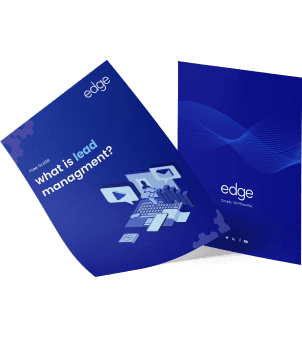For example, some companies or businesses describe a lead as a pre-decided prospective customer, whereas fads are defined as "sales contact” for others in sales background.” Irrespective of the type of business or requirements, leads are in general defined as potential customers. Or in simpler terms, someone interested in buying the product you are selling.
Now, not every contact is a lead; one cannot blindly approach to make a sale or pitch an idea when no interest is shown in the first place. Not having a vision of your leads will get you nowhere, and those might end up being just a contact number on your phone.
Pursuing a lead with insight is what defines our next topic "Lead Management".
What is Lead Management?
The basic old-school definition for Lead Management says “the process of handling leads constantly and equally.”
Now theoretically, it sounds perfect but on the practical level let us look into an example here.
Consider you are walking to a small store, you are greeted with a smile, and the reps help you out with the right products according to your budget. The store owners maintain the records of membership points on his register. Now with time, the business grows, and more customers join the offered membership, and there lies a need for a better system to record their data and points that the owner ignores and is not willing to hire more reps. With this growth, the sales reps are busier and fail to attend to you because of the crowd. You get disappointed with the slow response and negligence, and hence the store loses you as a customer. But with the growth, if the store owner had a proper system to feed data and more sales reps appointed, there would have been happier customers.
So basically, to point out the need for a Lead Management system is to have a quicker response time and have reps engage with context. For e.g. you’d certainly be pissed off when you want assistance to buy shampoo while the sales rep kept on suggesting to buy the new energy drink; or anyone who kept you waiting for a long time to answer where the relevant aisle is.
In terms of business terminology, according to the present-day scenarios, Lead Management means the process of bagging leads, tracking their activities and preferences, making them suitable for sales by giving constant attention, and then passing them on to the sales team.
Like you’d love to go to the store where you are religiously attended, helped out with choices according to your budget, and get free subscription emails for sales and discounts in the future. The store scenario will help you understand why Lead Management is needed.
Lead management systems are required when your business handles large volumes of customers or people with multiple leads to pursue.
For a simpler understanding, let us look into the stages of Lead Management and their working.
Stages of Lead Management
Looking into the chart below, these are the main stages. One should remember that the placement of stages is interchangeable and can be customized depending on your business requirements.
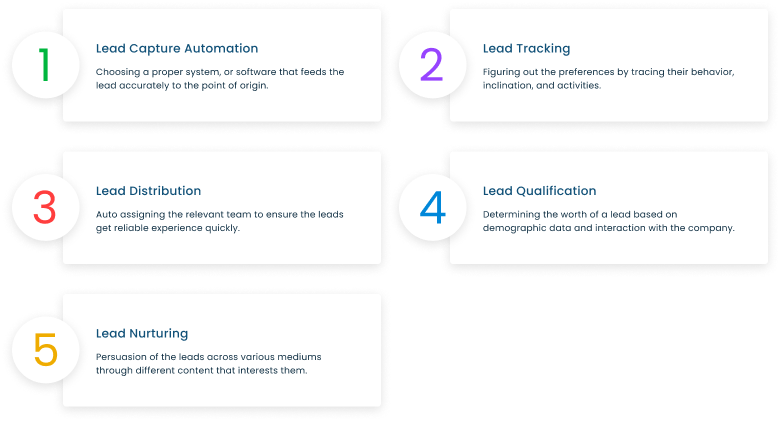
Lead Capture Automation
With leads coming up from infinite sources, thanks to modern-day technologies, manual methods seem impractical as it is open to errors. To avoid mishaps like lead leakage, a proper system, or software needs to be used to feed the lead accurately to the point of origin like a good jigsaw fit.
The software must be able to evaluate the sources with the most promising returns and leads.
This helps marketing and business intelligence teams a lot in restructuring the budgets by eliminating money exhausting leads.
Lead Tracking
Lead tracking is a must to help in pursuing the leads once they are captured.
Each lead needs to be tracked for their behaviours, inclinations, and activities. This should include their actions like the visited pages or sites, forms or subscriptions filled, or prices compared or tracking your phones in the current age.
With the help of tracking, the preferences can be figured out, which helps in customizing accordingly.
Lead Distribution
Handling a huge number of leads coming up from every source can be a nightmare without a proper system guiding it. After tracking is done, the leads are passed along with significant sales.
Based on the logic defined by each lead, the system auto assigns the relevant teams to pursue.
This reduces the response time, avoids confusion, and makes sure the leads are on the right path with the right match of people to direct with reliable experience.
Lead Qualification
Now upon receiving the leads, the teams check to identify the worth of the lead. Many systems like scoring or ranking are used to categorize unfit leads from worthy ones.
The worth of a lead is generally based on many factors like demographic data provided or commitment to the company.
The lead qualification systems and CRM score each lead based on the odds of their closure.
Although all quality ranking and scoring help in evaluating the persona, nothing beats human interaction in understanding the seriousness and determination of the buyer.
Lead Nurturing
Upon a lead is qualified, pursue them and call it a day. Every lead must be studied, categorized potential maybe’s from sure ones and customized accordingly.
There might be cases where leads might not be too keen on buying or might never even buy.
According to Marketo, on average, half of the leads haven’t made their decision on whether to buy or not, and MarketingSherpa reports that almost 80% of new leads never end up making a purchase at all.
But sale or no sale, one can be a brand supporter when provided with genuine data. This may include appreciation posts on blogs or freebies.
Figuring out ways to interest the leads and pursue them makes up the largest and most important part of the system.
This is where persuasion of the leads across various mediums happens through different content that interests them, like social media or SMS, or drip emails.
Remember, Lead Generation + Lead Nurturing = Greater Success
Lead Management Best Practices You Should Follow
Define your ideal lead
Not every lead is the best fit for your company. Clearly defining the parameters of your ideal lead is crucial.
So, how do you do it?
Create an Ideal Customer Profile (ICP)
An ideal customer profile (ICP) is a clearly stated document that defines the best possible customer for your company’s product or service. This profile is the reference that can be used to help you qualify any leads that come into contact with your brand.
When creating your ICP, you may have to consider some parameters suitable for your company profile. Some examples may include:
- Industry - does your ideal customer work in a specific industry?
- Location - does your business cater to a particular region or demographic?
- No. of employees - is your product specifically designed for a limited number of users?
- Budget - how much minimum should a customer pay to avail of your services?
- Legal factors - are their legal requirements causing you to limit your customer base, such as age, location, or governmental status?
Your business may require some of these or all of these profiles to define your ICP. Once you have figured out this checklist, it becomes very easy to qualify or disqualify the leads. With this, you can ensure your sales team is spending time with the better fit leads.
Create a Buyer Persona
Your buyer persona sheds light on exactly the kind of customer you’re trying to attract for your business. It is a generalized representation of your customer designed from the experiences that you have had with your past and present customer base.
Outlining the very basic characteristics will help you design the buyer persona. This may include:
- Their job title
- The industry they belong to
- Their goals and motivations
- The problems faced by them
Try to figure out how your service or product will help your buyer to grow and eliminate the hurdle their business is facing.
Plan your experience building for the lead
Every lead should go through the stages of lead management. For higher conversion rates, it is necessary to plan strategically the journey of the leads through the sales funnel.
Creating an outstanding experience for the lead right from the beginning stage is the best way to obtain desired results.
Make sure you're creating offers for each phase of the buyer’s journey.
Even if the lead is in the initial stage of the buyer’s journey and still not ready to buy, it is important that you create a fruitful experience. For example, if you fail to create any informative content for the first-time visitor on your website, there are very less chances that he/she may visit your website again.
Make sure you're offering something valuable at each phase and providing Call-to-Actions (CTAs) throughout your site.
80% of B2B companies use content marketing for lead generation.Source: Content Marketing Institute
It’s no surprise that 80% of B2B marketers consider lead generation to be the top goal of their content marketing efforts.
You can incorporate most of the following content strategies as per your business requirements:
- Demos
- Trials
- Email Subscriptions
- Guides
- E-books
- Podcasts
- Slideshare presentations
- Original research articles
- Templates
- Free tools
- Events
- Contests
- Webinars
- Free Apps
- Courses
When a lead gets a rich experience with your brand, it creates a lasting impression.
Clearly segment your leads
Irrespective of your product or services, your target customers are going to be a diverse mix of people with different requirements. Lead segmentation specifies your efforts to deliver personalized customer experience to different customer types as per their needs and business requirements.
You need to decide on what parameters you are going to segment your leads to provide the relevant solutions to their needs. These parameters may include demographic details, behavioral details, geographic details, psychological details, and many others.
To make it more specific, we could list it down to the following:
- Existing customers
- Repeat customers
- Free trial/demo: People who are interested in your product/service.
- Website visitors: Homepage, landing pages, product/service pages, etc.
- Repeat visitors: Regular blog readers, multiple visits to product/service pages, etc.
- Email subscribers: Newsletter, eBook downloads, webinar signups, etc
- Downloaders: Resources or software
- Demographics
- Hot leads
- Cold leads
The content should be relevant to the lead for them to provide the solution they desire.
For example, if you intend to mail a resourceful article related to a pharma industry, you should group your pharma industry targeted leads. They will find the guide highly relevant to their area of operation. Without lead segmentation, you’re just sending the same generic messages to everyone. You’re not addressing specific needs, showing people which problems you’re going to solve for them or giving them any reason to believe they should buy from you instead of the countless other businesses offering a similar package.
So, gather all the information you can about your leads, in order to group them. Then you can cater to their needs.
The more relevant your content is, the more likely it is that they’ll reply.
So how do you manage a segmented leads list?
The most important tool is a CRM platform that allows you to create and manage your segmented lists.
For instance, in edge CRM, you can create profiles for individual leads and customers with easy to update features. You can easily change/update their info as they progress along the buying process and as you gain more data about them.
More importantly, email integration with edge CRM is an amazing CRM-email-marketing combination that will provide the perfect automation for segmenting your leads and catering to their specific needs. No need to manually send emails or move contacts into other lists!
Define Turn Around Time for the Leads
A study in the Harvard Business Review showed that only 37% of businesses responded within an hour.

That means 63% of the businesses surveyed were taking way too long to respond to their leads. And as you’ll see, even waiting an hour can have disastrous consequences
50% of leads go with the vendor that responds first.
Speed to lead statistics consistently prove that the faster you can respond to a lead, the more likely you are to qualify and process that lead.
But how do you reduce your turnaround time?
For most businesses, the reason for the slow response is not having the right software.
If your software fails to alert the sales team about the lead’s interest immediately, your system fails prey to operational hindrance.
How do we solve it?
Speed to lead statistics from Velocify shows that responding to a lead within 1 minute has a 391% improvement in lead conversion rate.
Sounds crazy, right?
How can we possibly respond so quickly?
Thanks to the intelligently designed CRMs, this seems quite possible.
For instance, edge CRM integrates the website with the lead management software. Whenever a lead on your website clicks the call to action button and fills out the information, edge CRM matches the lead to the right sales representative and instantly engages the lead by getting them to schedule a call. (Book a Free Demo)
The response is quick and automatic.
There’s no waiting, no complicated funnel, and no back and forth between your team members.

Closely work with your sales team
Many industries prefer Sales and Marketing to be separate entities. However, people tend to be neglectful towards the fact that their work is interconnected. Despite the differences, both entities can make up a good team, leading to an increased profit earned by the companies.
According to a number of researchers, if the Sales and the Marketing team are clubbed, the efficiency of the organization increases.
Have you heard of Smarketing?
The alignment of Sales and Marketing within a company or a business that helps in giving out superior results is known as Smarketing.

To learn how to incorporate Smarketing for your business, check out this step-by-step guide: https://www.edgecrm.app/articles/what-is-smarketing-the-ideology-perks-and-steps
In a gist, your sales team needs to know the criteria your marketing team uses to qualify leads and send them over. They need to be in the loop, in order to know what to sell and how to sell it.
Smarketing holds the ability to bring up the marketing qualified leads (MQL) and sales qualified leads (SQL) together.
When this collaboration works efficiently, the transition of the leads through the sales funnel is smooth, and chances of conversion increase multifold.
Do you need a Lead Management System? 5 symptoms which highlight you need a system
Having gone through all the stages and benefits of a lead management system, you may wonder whether your business requires this system.
Is it worth investing in a lead management system?
Let's find out in seconds!
Answer the following questions right now:
No of Leads
You are planning to optimize strategies to gain more leads. In the near future, the number of leads are going to increase.
TAT for leads
Your sales team is struggling with the turn-around time for leads with no system to notify them timely.
Lack of transparency in the assignment of leads
There is no coordination within the sales team as to who is to attain which lead.
This is resulting in leaks in the sales funnel.
Updates on leads
The position of the leads in the sales funnel cannot be easily monitored. Interactions with leads are not recorded and no data is available for further study.
Low conversion Ratio
Your business’s lead conversion ratio is poor. It has become difficult to pinpoint the precise bottlenecks for the cause.
If the answers to the above questions come out to be positive, it is time to opt for the right lead management software for your business.
Now that you are aware that your business needs lead management software, what exactly should one keep in mind while selecting the right Lead Management software?
The software majorly depends on the processes carried out in the business in question, needs and requirements, and the size of the business handled.
One can take an example of a bed and breakfast handling customers using a register. As it grows to a restaurant, it’ll use spreadsheets to keep track and record the computer data while growing into a fully-fledged multi-chain, a more complex process of automation and business analytics is required to keep track and work.
So are you ready to invest in lead management software? Before you take the plunge, consider some crucial points.
Things to keep in mind when investing in a Lead Management Software
Figure out the purpose of executing a software
There are many reasons one might need good sales Lead Management software, but the most common ones are to increase sales, more leads, and analytics.
When it comes to increasing sales, it handles both sales and marketing by tracking activities and maintaining the relationship through various modes like SMS or emails.
The software must notify when the leads are on the lookout for different pricing or checking other options. On the other hand, increasing the number of leads is generally done by gathering data first through discussions via email or messages.
Then assimilation of the data with tools like surveys, pop-ups are done from major lead-producing channels for scoring a solid lead.
With analytics, gaining insight into the happenings like most revenue collecting leads, or where the lags in communication are occurring can be figured out. Such software must have access to commanding and customized reporting.
The compatibility of the software
While looking out for features, one must not forget to see how flexible and attuned the software is to your systems.
To be able to work without any huge compromise on the quality of the results and be able to map the leads correctly is vital as well.
Does the software fetch you leads?
Fetching leads from different sources is the essential feature you should look for in the lead management software.
The software must capture the leads from primary sources like emails, chats, telephones, and paid or unpaid sources like Google, Instagram, or Facebook.
Let us look at a case study:

Mudra is India’s promising Fintech start-up aiming to deliver industry-leading financial solutions and products to serve its customers. In today’s complex and ever-evolving banking ecosystem, Mudra is aiming at providing a client-centric, systematic, and responsible financial approach to its customers.
Mudra partnered with edge CRM for its technological revolution. edge CRM’s financial cloud is explicitly designed to help fintech like Mudra become more client-centric with its future-proofed features.
Systematic integration of Facebook, LinkedIn, and Google ads with the CRM is helping Mudra to directly connect the social media interactions within the ecosystem. With these integrations, the customer response time has drastically reduced, powering the sales team to clock a quicker turn-around time. Besides, the incorporation of website, CTI, and other ongoing integrations with edge CRM are together bringing in a stronger focus on customer satisfaction and retention.
Does the software has a scoring Mechanism?
The lead scoring mechanism is an extremely useful feature that helps you decide the priority of the leads and accordingly plan the persuasion game.
To simplify it, let us look at edge CRM’s ‘lead scorecast.’
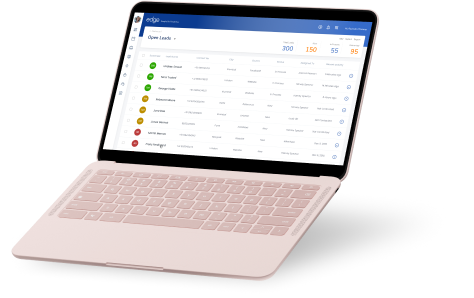
Each lead that enters the sales funnel is given a score based on the factors that you can decide and customize. This AI-driven attribute scores your links based on custom lead scoring dynamics.
You know which lead to pursue on priority. Calculated decision-making becomes very easy when the leads are prioritized in this unique fashion.
DO NOT miss this feature while selecting a lead management software.
Role of the field sales team
The role of the field sales team for software majorly depends on how much an organization relies on it in the first place.
A field sales team, as the name suggests, does the fieldwork for the organization by establishing a connection shop to shop and recruiting as they go.
Like a builder would build flat towers but would rely on real estate brokers to fetch customers.
Need for multi-centre organization
To make it more manageable, the software should be compatible with more electronic devices like phones by being in-app as this would cut down other costs and save time.
With cloud-based Lead Management software, manual errors can be brought down with quicker responses. Along with proper lead distribution, it surely will help a lot.
This will help people track and analyze more easily, figure and evaluate the returns, and track performance. And one would be able to maintain confidentiality as well.
Does the software provide lead activity tracking?
Understanding the position of a lead in the sales funnel can make a huge difference as to how you pursue, interact and approach it. A lead management software should record each activity that the sales team conducts with a particular lead.
Activity tracking can maintain a clear overview of all sales activities and performance with visual pipelines.
The biggest cause of lost sales is missed follow-ups: proposals not sent, calls & emails not returned, and just not enough outreach. What if the software provides assistance to every salesperson by creating timely escalations.
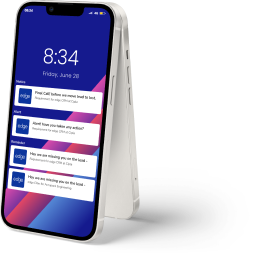
Look at the screenshot above. edge CRM’s ingenious assistance won't let you overlook any business opportunity.
You can trace untouched prospects, upcoming deals, salespeople and closing possibilities methodically. Predicting and preventing threats and losses becomes simpler as systematic escalations ensure follow-through at all stages.
How do Lead Management Systems differ from Customer Relationship Management (CRM)?
The answer to this question would be like both the methods use the same formula but customer relationship management or CRM extends on establishing more services to the customer.
Lead management systems look for prospects, track them accordingly and capture, pursue and make them sales-ready, but CRM covers more on services for the customer end like retention, feedback, cross-selling, upselling, or any other services when the customer chooses as his buyer.
But when do we use CRM and Lead Management?
CRM must be preferred when you want to focus and monitor a few leads and have a one-on-one relationship with each of them. Lead Management systems must be used while handling huge volumes of leads surfacing from many sources and growing businesses.
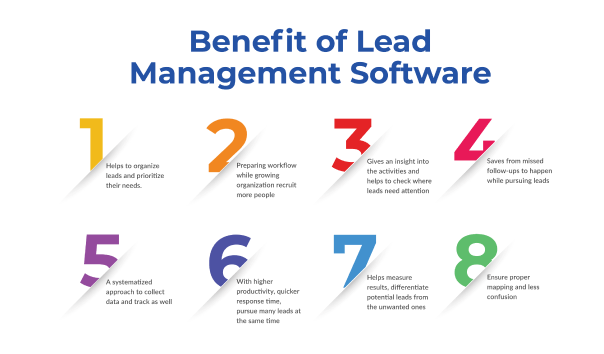
- There are numerous reasons why Lead Managements are needed and its benefits like:
- Helps to organize leads, and prioritize the needs.
- Preparing workflows while growing organizations recruit more people.
- Gives an insight into the activities and helps to check where leads need attention.
- Saves from missed follow-ups happening while pursuing leads.
- A systematized approach to collect data and track it as well.
- Ensures proper mapping, less confusion.
- Helps you measure results, and differentiate potential leads from unwanted ones.
- With higher productivity, quicker response time, you can pursue many leads at the same time.
TOP 5 software to manage your leads effectively
edge CRM
edge CRM is an award-winning software known for its easy-to-use features, uncomplicated interface, and simple but efficient lead management system. Edge’s AI-driven lead scorecast portrays the priority leads with an embedded result computing mechanism based on customized lead scoring dynamics. Loved by thousands of professionals, edge CRM is providing industry-specific solutions to its vast variety of clients from different domains.
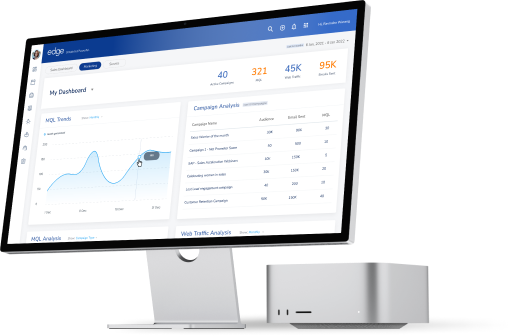
Hubspot
Hubspot’s Lead Management & Tracking Software helps you manage and follow-up leads all in one place. You can view complete sales activities, detailed company and contact records, and communication history in one place so you can manage leads without the hassle.
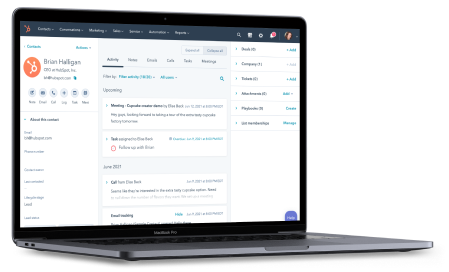
Pipedrive
Pipedrive CRM is an easy-to-use system that focuses activities on getting measurable results. You can get up and running with this CRM software in just a few minutes.
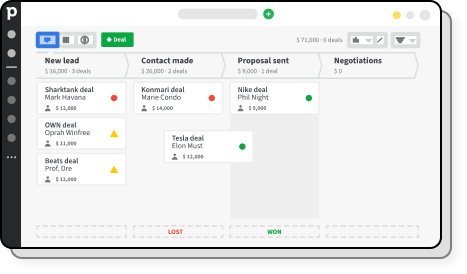
Salesforce
Salesforce lead management software helps you get up to speed on each lead in your pipeline to help you convert fast. With this software, you can keep leads engaged at every step of the marketing journey.
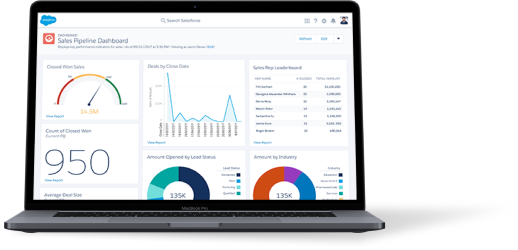
Insightly
Insightly is a unified CRM platform to align your marketing, sales, and project teams. Insightly helps you create engaging customer journeys and grow pipelines.
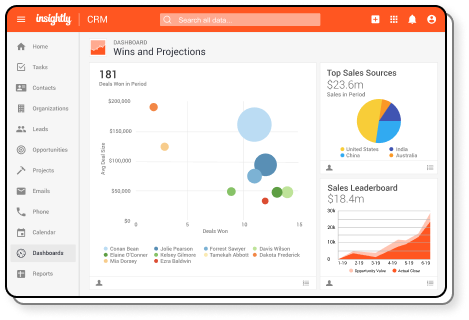
Conclusion
In conclusion, Lead Management systems are required for growing businesses as it helps in managing a large volume of data and also organize it as well.
The job of a Lead Management system does not end with getting leads but also differentiating and studying them as well. It also tracks and keeps a record of the activities while also maintaining communication through various mediums.
Systems with such features surely are needed when handling huge databases while businesses that no longer work remotely. With all leads fed to the system, it saves a lot of time while following up with the clients with all required information a click away. Tracking sales activity and progress across all the sites and locations of your businesses becomes easier and can help in eradicating all unwanted leads or any issues otherwise.
Resorting to old school spreadsheets for managing leads can slow down the efficiency 70% approximately according to a report in edge CRM.
Be it to gain new leads or improve the relationship with the present ones; a proper premeditated Lead Management system is needed.
Select a system that caters to your pain points.
Hope this guide cleared your doubts about the lead management systems!
Thank you!












